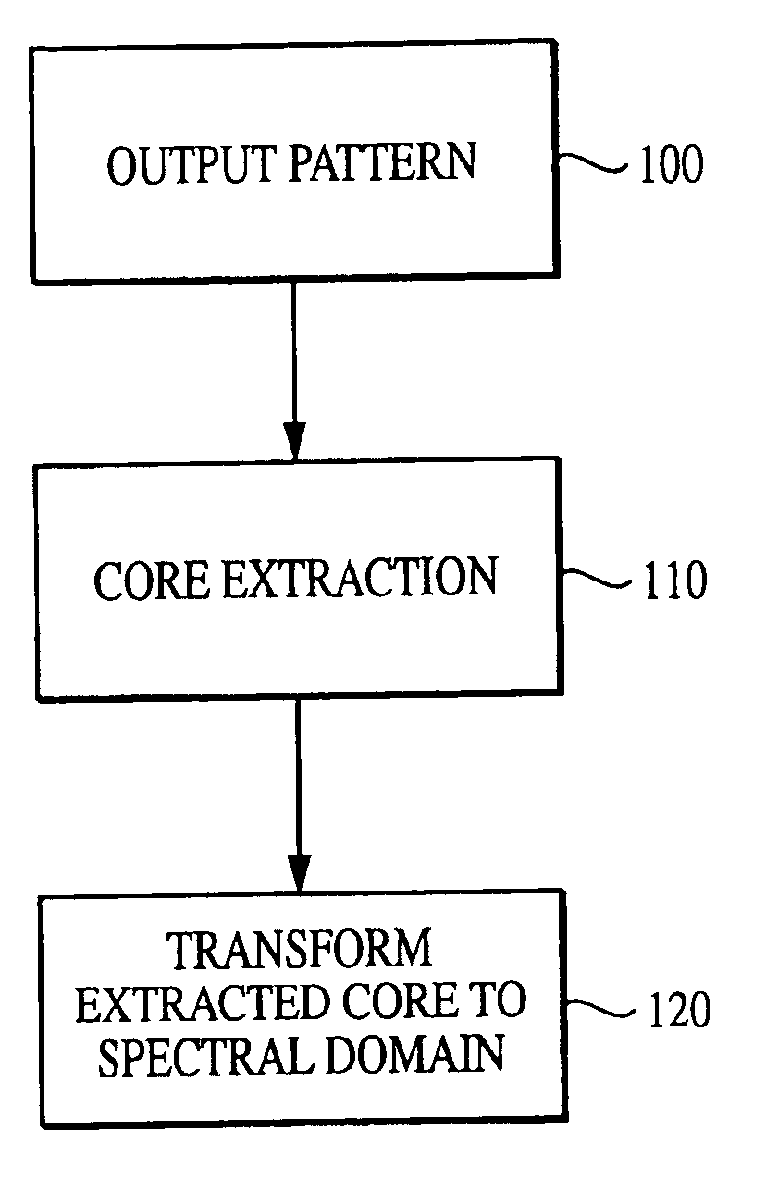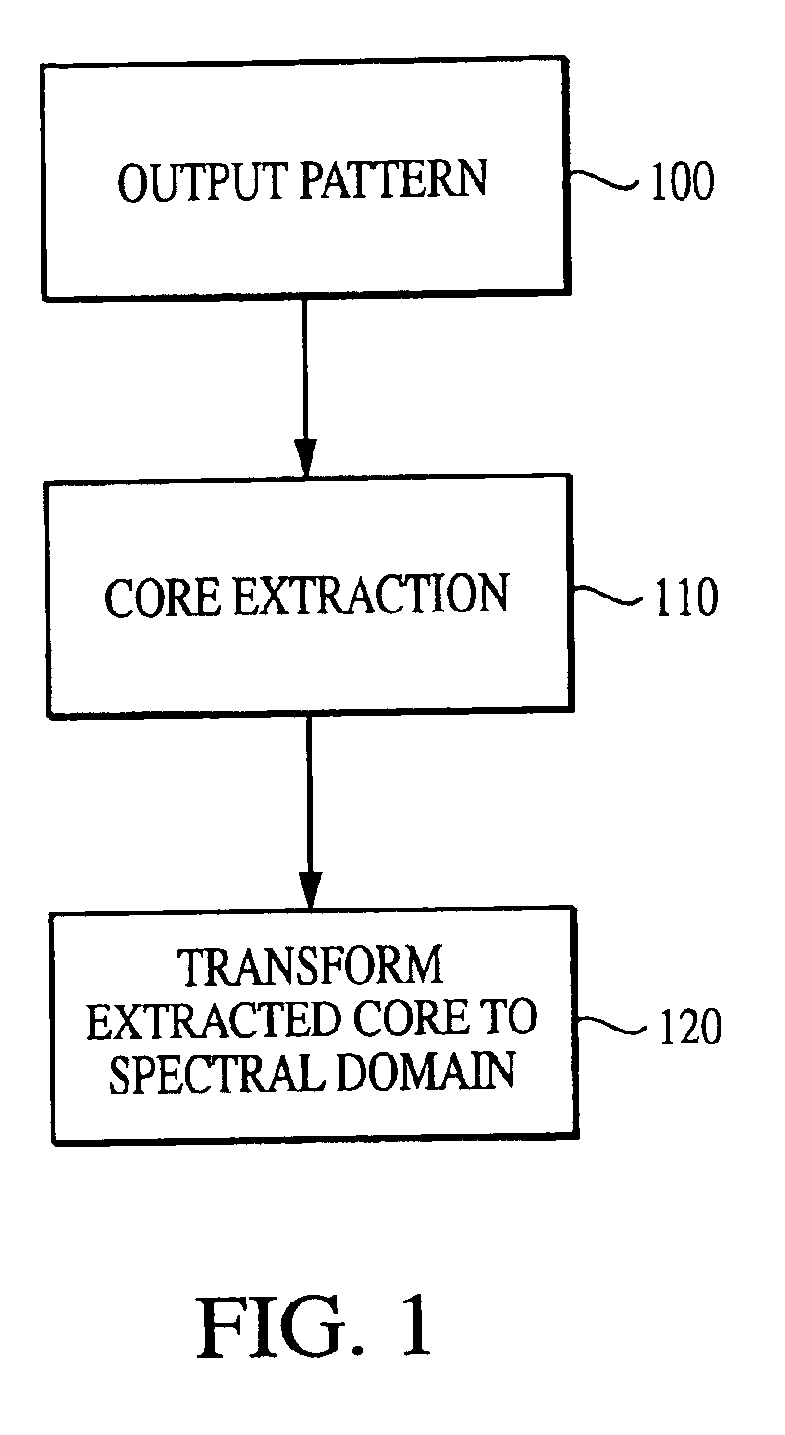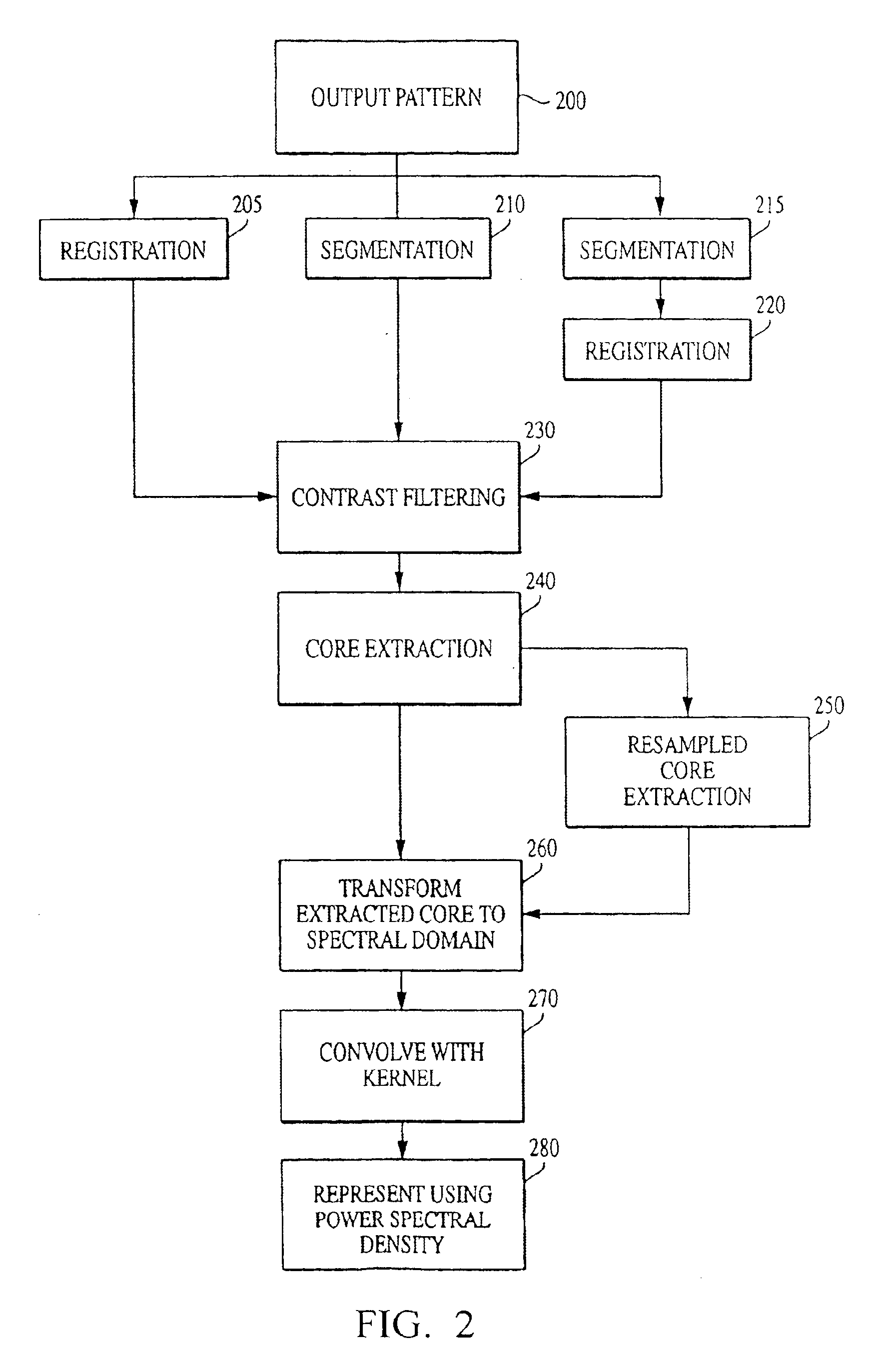System and method for characterizing microarray output data
a microarray and output data technology, applied in image data processing, instruments, image enhancement, etc., can solve the problems of false negatives, errors still occurring when characterizing data output from arrays, erroneous measurements, etc., to enhance spatial resolution and enhance contrast
- Summary
- Abstract
- Description
- Claims
- Application Information
AI Technical Summary
Benefits of technology
Problems solved by technology
Method used
Image
Examples
Embodiment Construction
[0116]With reference to the figures, exemplary embodiments of the invention will now be described. The current invention is embodied in a technique for characterizing output data from an arrayed platform. While the invention is primarily described in connection with genomic microarrays, biochips and protein arrays, it will be appreciated by one of the ordinary skill in the art that the invention may be used in connection with a wide variety of arrayed platforms of detectors, including detectors for characterizing biological materials and other applications. It will also be appreciated that while the current invention is primarily described as a method, it may also be embodied in system comprising a computer processor and a memory coupled to the processor, where the memory is encoded with one or more programs that may perform the methods disclosed herein. One of ordinary skill in the art will also appreciate that the invention may also be embodied in an enhanced output pattern (which...
PUM
| Property | Measurement | Unit |
|---|---|---|
| angles | aaaaa | aaaaa |
| angles | aaaaa | aaaaa |
| apical angle | aaaaa | aaaaa |
Abstract
Description
Claims
Application Information
 Login to View More
Login to View More - R&D
- Intellectual Property
- Life Sciences
- Materials
- Tech Scout
- Unparalleled Data Quality
- Higher Quality Content
- 60% Fewer Hallucinations
Browse by: Latest US Patents, China's latest patents, Technical Efficacy Thesaurus, Application Domain, Technology Topic, Popular Technical Reports.
© 2025 PatSnap. All rights reserved.Legal|Privacy policy|Modern Slavery Act Transparency Statement|Sitemap|About US| Contact US: help@patsnap.com



